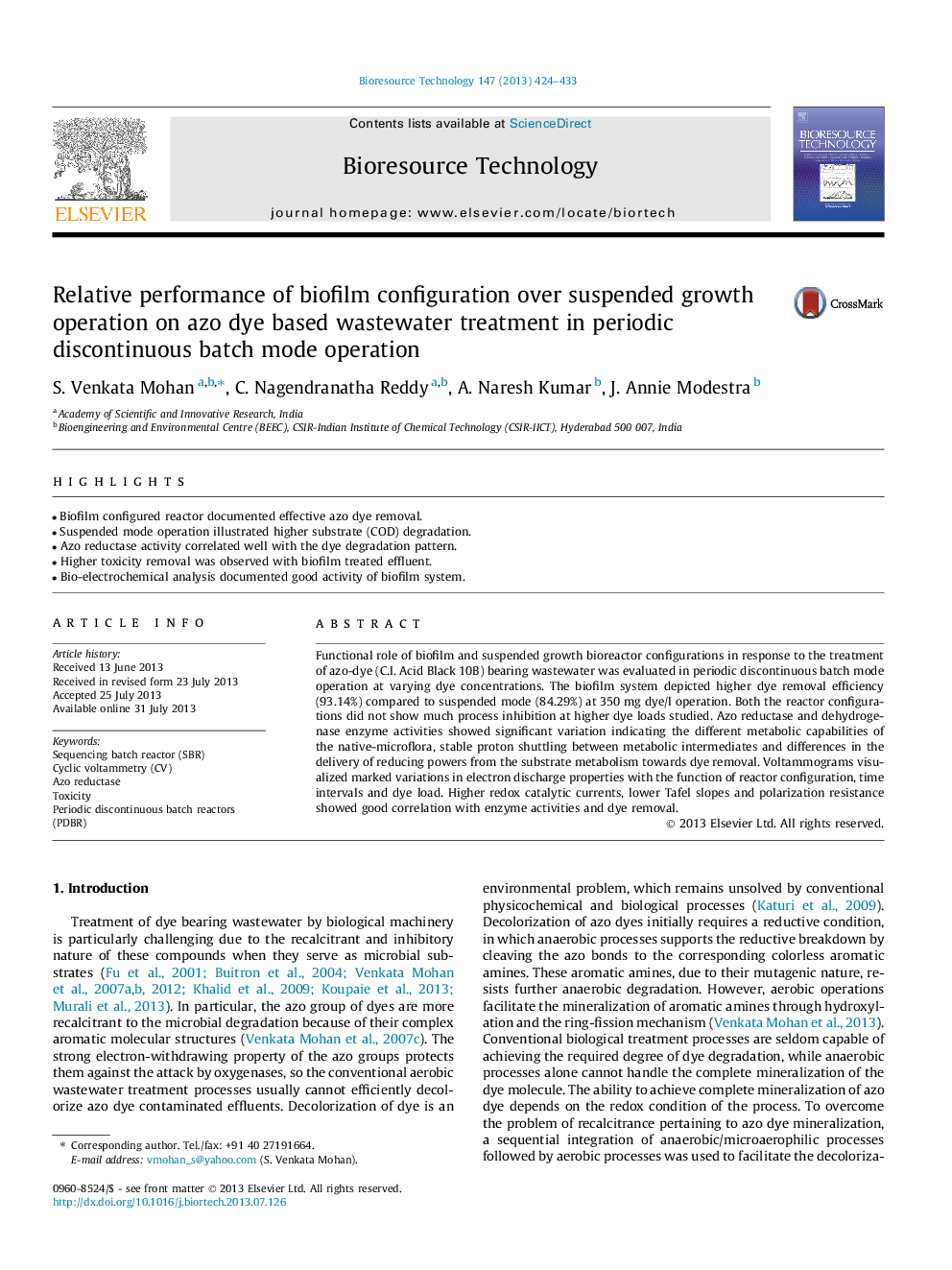| Article ID | Journal | Published Year | Pages | File Type |
|---|---|---|---|---|
| 7080416 | Bioresource Technology | 2013 | 10 Pages |
Abstract
Functional role of biofilm and suspended growth bioreactor configurations in response to the treatment of azo-dye (C.I. Acid Black 10B) bearing wastewater was evaluated in periodic discontinuous batch mode operation at varying dye concentrations. The biofilm system depicted higher dye removal efficiency (93.14%) compared to suspended mode (84.29%) at 350Â mg dye/l operation. Both the reactor configurations did not show much process inhibition at higher dye loads studied. Azo reductase and dehydrogenase enzyme activities showed significant variation indicating the different metabolic capabilities of the native-microflora, stable proton shuttling between metabolic intermediates and differences in the delivery of reducing powers from the substrate metabolism towards dye removal. Voltammograms visualized marked variations in electron discharge properties with the function of reactor configuration, time intervals and dye load. Higher redox catalytic currents, lower Tafel slopes and polarization resistance showed good correlation with enzyme activities and dye removal.
Related Topics
Physical Sciences and Engineering
Chemical Engineering
Process Chemistry and Technology
Authors
S. Venkata Mohan, C. Nagendranatha Reddy, A. Naresh Kumar, J. Annie Modestra,
